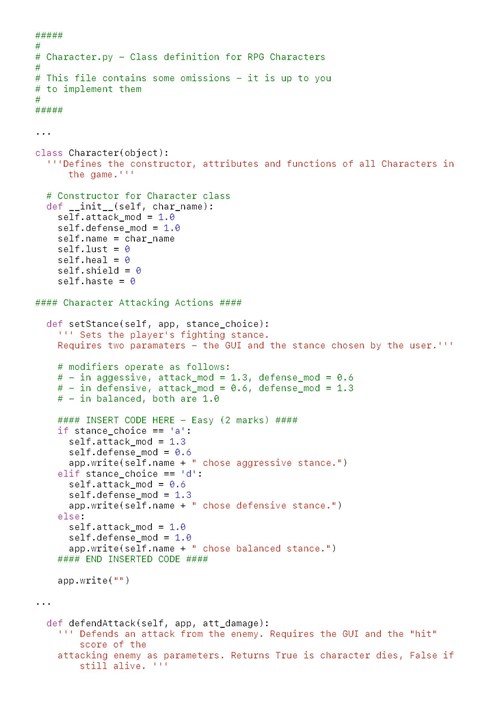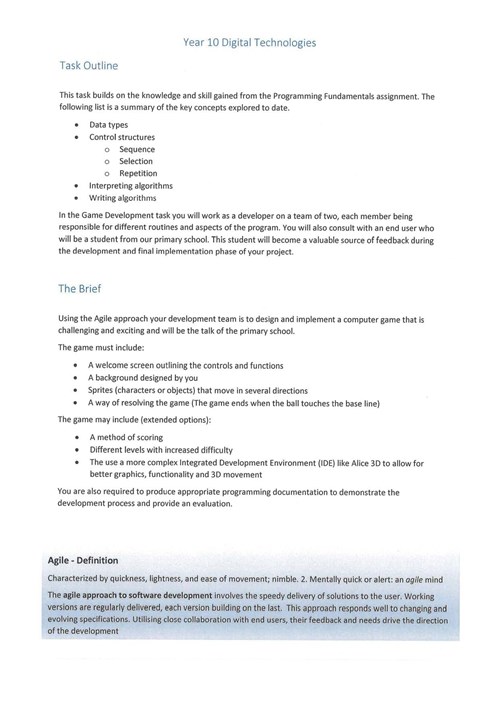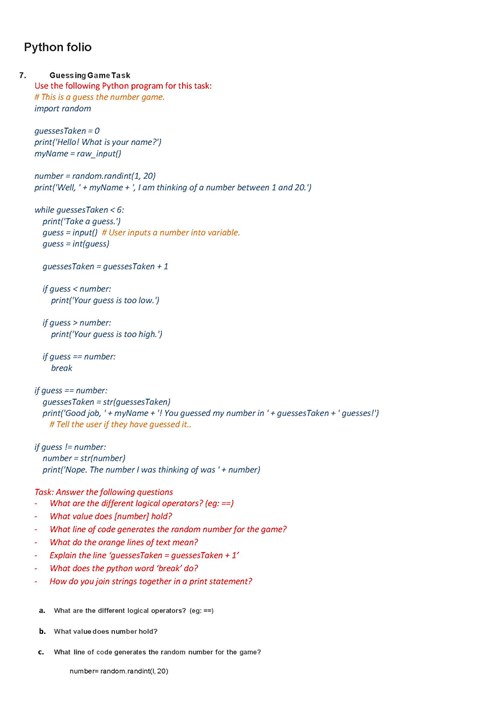- Home
- Resources
- Work samples
- Samples
- Digital project: Python game - BELOW
Digital Technologies
Years 9 and 10
Below satisfactory
Digital project: Python game
Summary of task
Students were provided with a game that had been developed by previous students at the school using Python. They were required to correct any errors and to modify the game by creating additional features and functionality, for example new character races, new difficulty levels or game modes. Students deconstructed components of the game where needed to improve their understanding of the programming.
Achievement standard
By the end of Year 10, students explain the control and management of networked digital systems and the security implications of the interaction between hardware, software and users. They explain simple data compression, and why content data are separated from presentation. Students plan and manage digital projects using an iterative approach. They define and decompose complex problems in terms of functional and non-functional requirements.
Students design and evaluate user experiences and algorithms. They design and implement modular programs, including an object-oriented program, using algorithms and data structures involving modular functions that reflect the relationships of real-world data and data entities. They take account of privacy and security requirements when selecting and validating data. Students test and predict results and implement digital solutions. They evaluate information systems and their solutions in terms of risk, sustainability and potential for innovation and enterprise. They share and collaborate online, establishing protocols for the use, transmission and maintenance of data and projects.
 1
Annotation 1
1
Annotation 1
Demonstrates some understanding of the functional requirements by updating the Base Character class 2 Annotation 2
Attempts to set stance based on parameters, but IF statement is not used
-
Annotations
-
1
Annotation 1
Demonstrates some understanding of the functional requirements by updating the Base Character class -
2
Annotation 2
Attempts to set stance based on parameters, but IF statement is not used
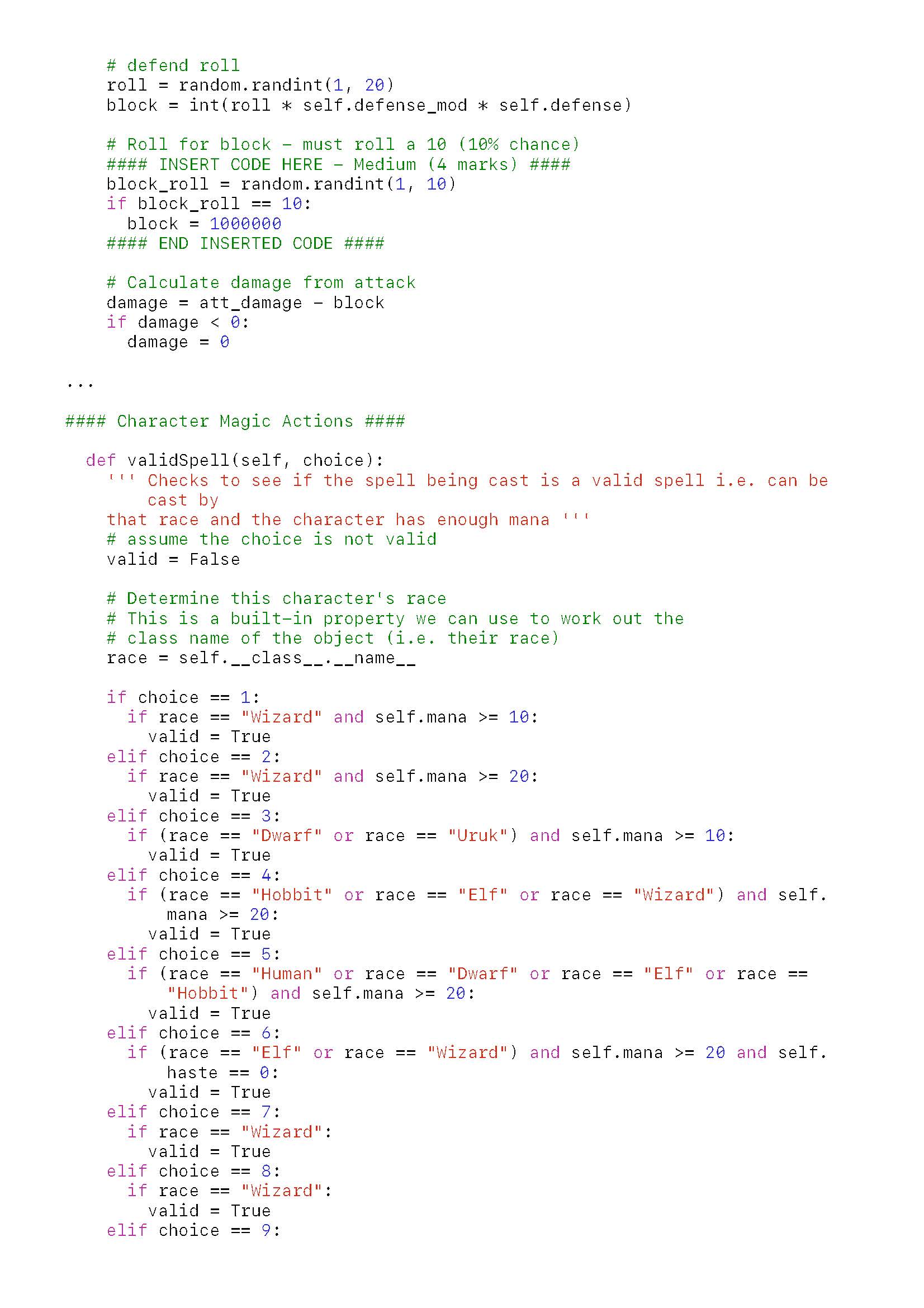 1
Annotation 1
1
Annotation 1
Modifies an object-oriented program to successfully implement 10% chance of blocking 2 Annotation 2
Updates validSpell function to meet a functional requirement (validity check occurs for Wizard and Rohirrim on options 8 and 9 respectively)
-
Annotations
-
1
Annotation 1
Modifies an object-oriented program to successfully implement 10% chance of blocking -
2
Annotation 2
Updates validSpell function to meet a functional requirement (validity check occurs for Wizard and Rohirrim on options 8 and 9 respectively)
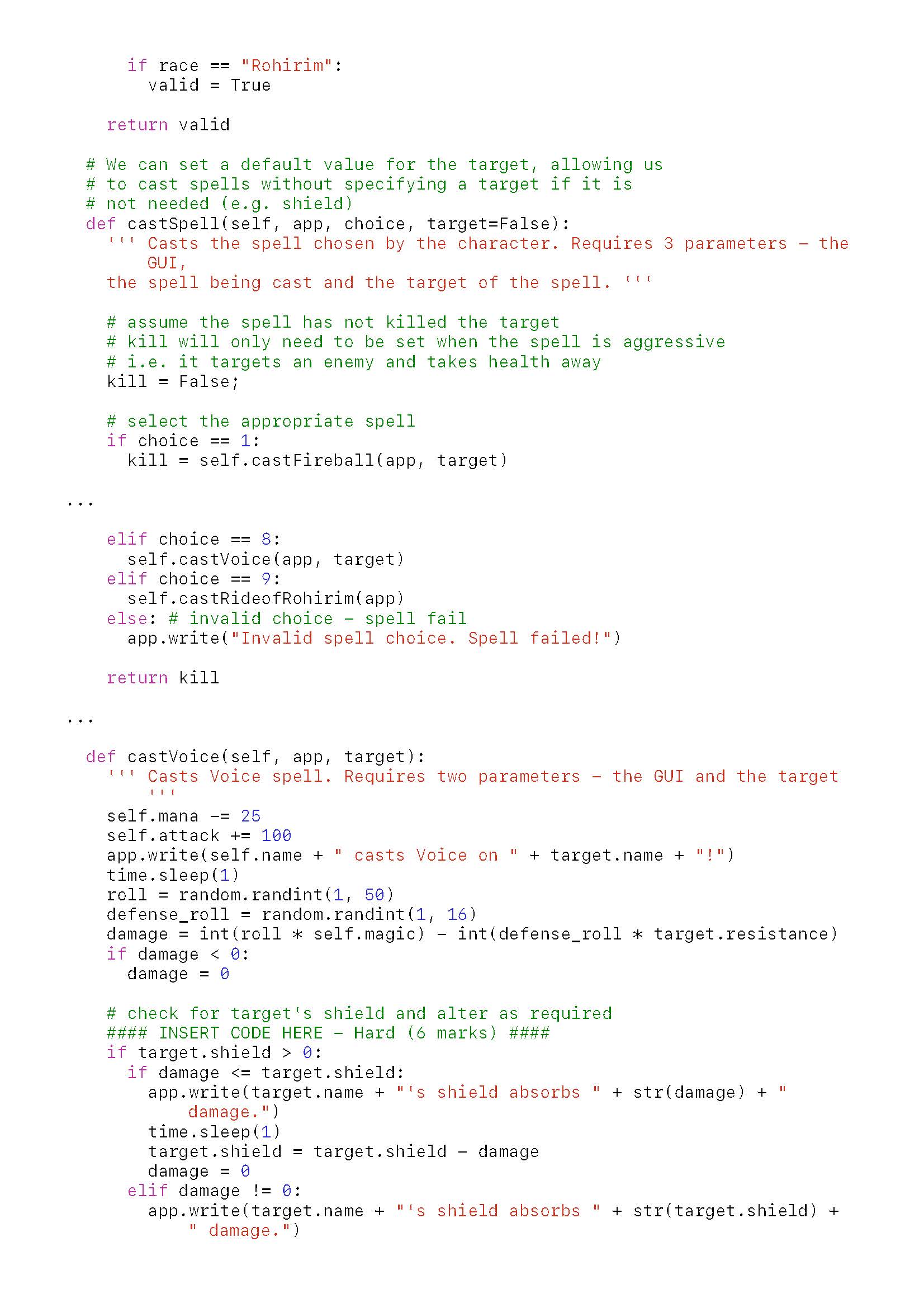 1
Annotation 1
1
Annotation 1
Modifies an object-oriented program by adding two new spells to the castSpell function and assigning new choices for player input 2 Annotation 2
Modifies an object-oriented program by implementing a new spell (modifies player's abilities and performs an attack) 3 Annotation 3
Applies understanding of program to correctly implement a shield based on damage removal in the defense algorithm
-
Annotations
-
1
Annotation 1
Modifies an object-oriented program by adding two new spells to the castSpell function and assigning new choices for player input -
2
Annotation 2
Modifies an object-oriented program by implementing a new spell (modifies player's abilities and performs an attack) -
3
Annotation 3
Applies understanding of program to correctly implement a shield based on damage removal in the defense algorithm
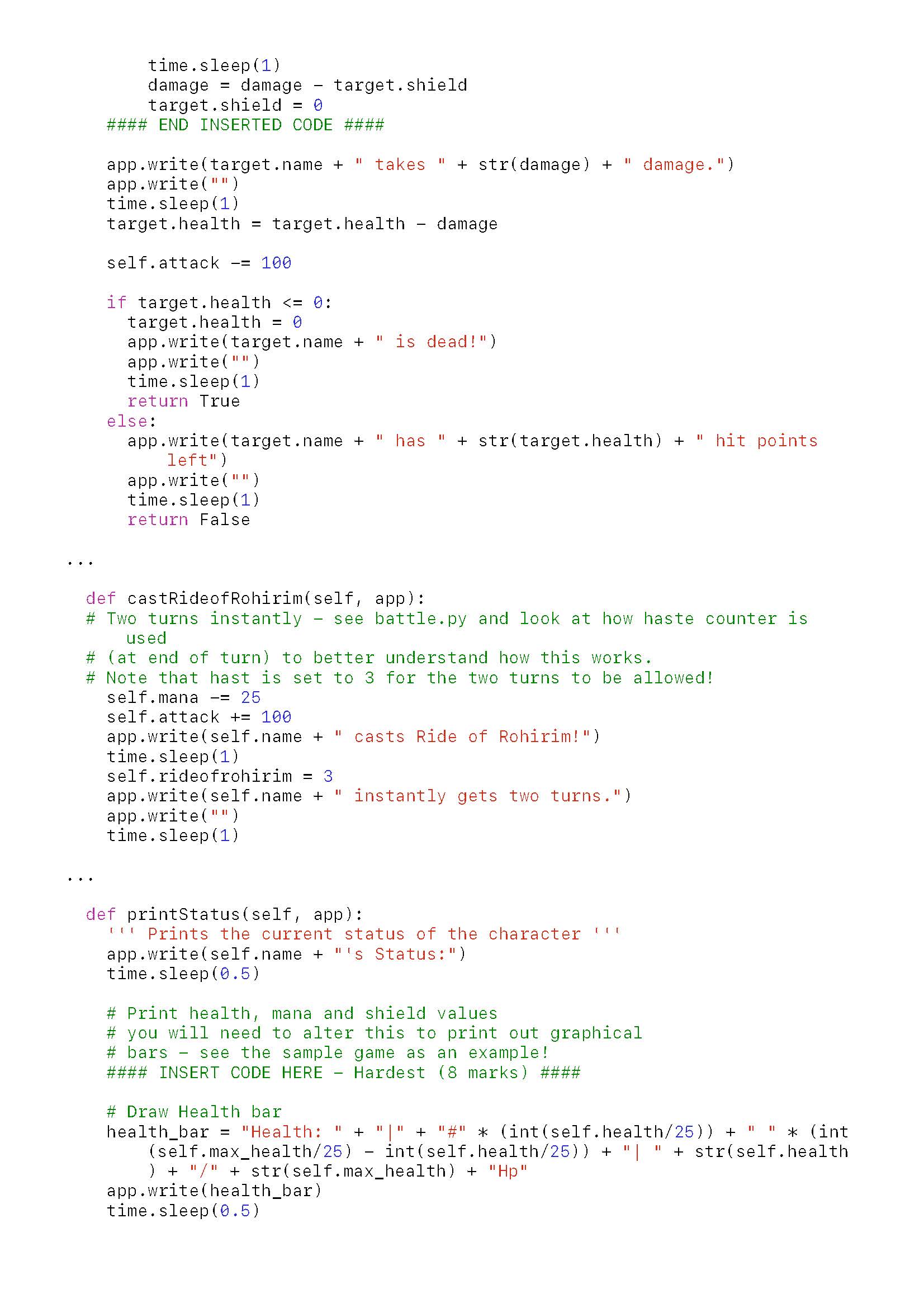 1
Annotation 1
1
Annotation 1
Adapts program to revert player's attack back to original value after Voice is cast to ensure state of game is restored post-spell 2 Annotation 2
Adapts program to change user experience (spell has been adapted from the Haste mechanic and provides extra turns in the same way)
-
Annotations
-
1
Annotation 1
Adapts program to revert player's attack back to original value after Voice is cast to ensure state of game is restored post-spell -
2
Annotation 2
Adapts program to change user experience (spell has been adapted from the Haste mechanic and provides extra turns in the same way)
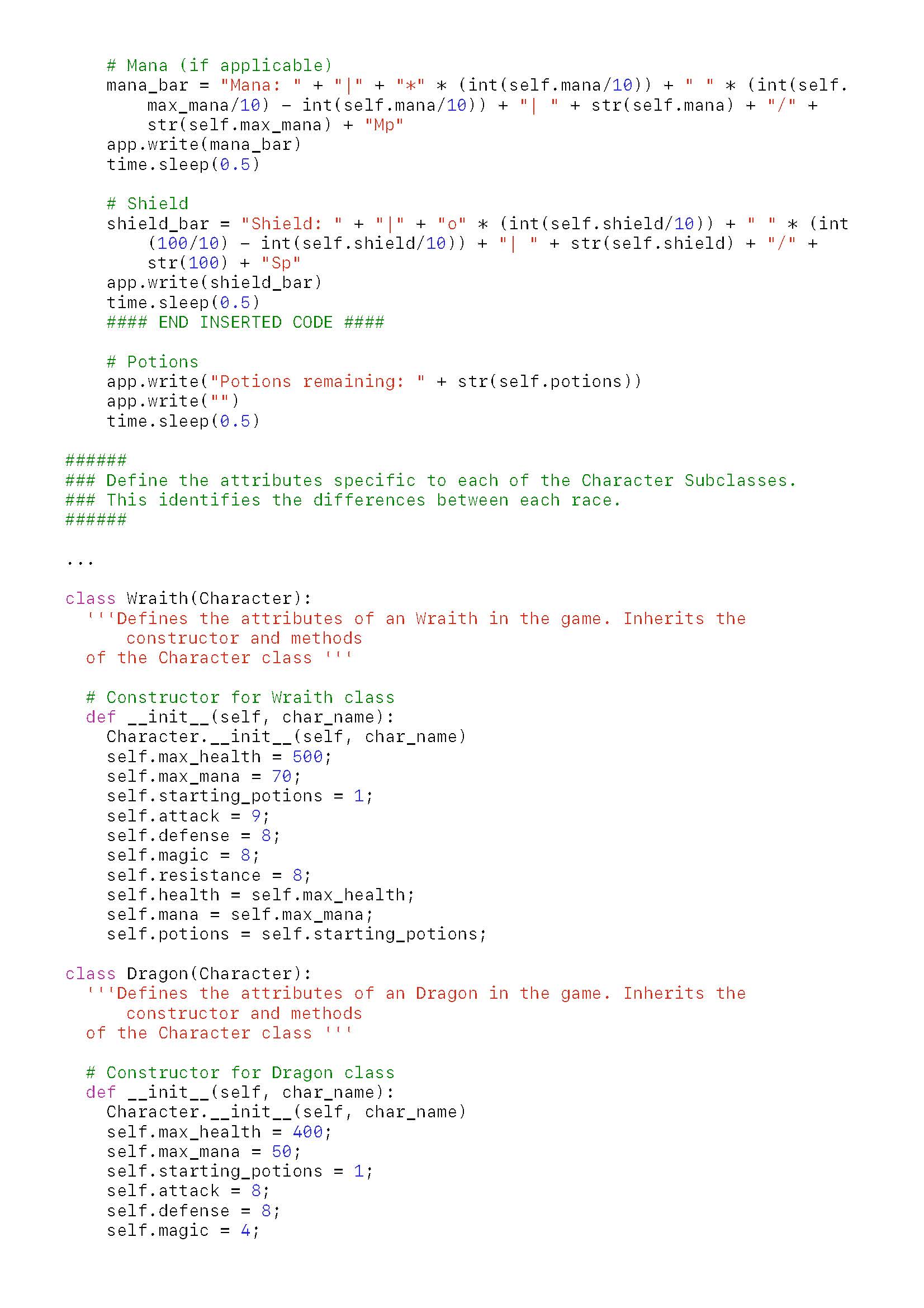 1
Annotation 1
1
Annotation 1
Produces a visual representation of the player's status (always displays all attributes, even when not relevant to some races, for example some have no mana or cannot cast a shield)
-
Annotations
-
1
Annotation 1
Produces a visual representation of the player's status (always displays all attributes, even when not relevant to some races, for example some have no mana or cannot cast a shield)

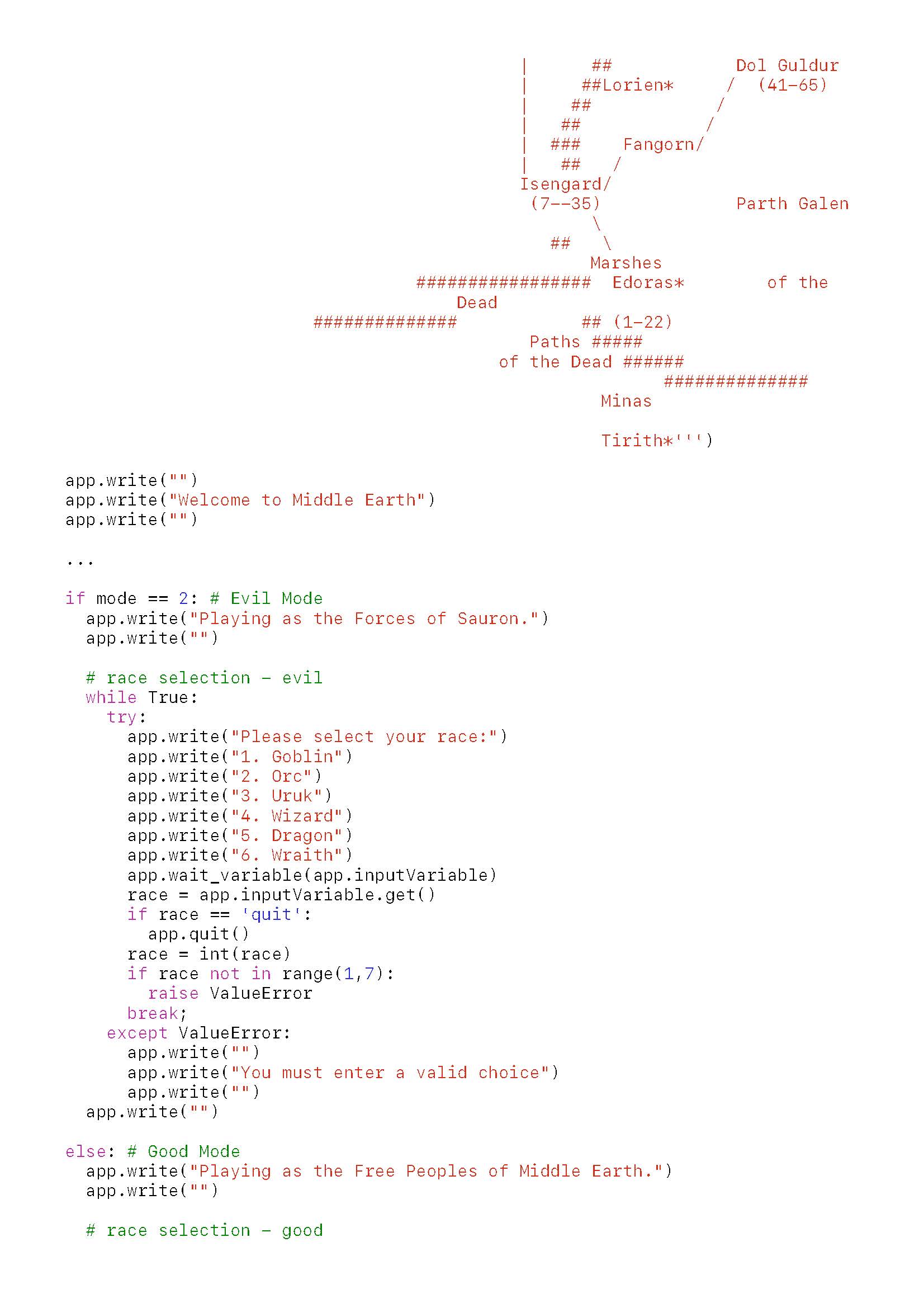 1
Annotation 1
1
Annotation 1
Includes a map of Middle Earth for aesthetics only 2 Annotation 2
Adds some appropriate functions to the game (options added to the player select menus for Dragon, Wraith and Rohirim)
-
Annotations
-
1
Annotation 1
Includes a map of Middle Earth for aesthetics only -
2
Annotation 2
Adds some appropriate functions to the game (options added to the player select menus for Dragon, Wraith and Rohirim)
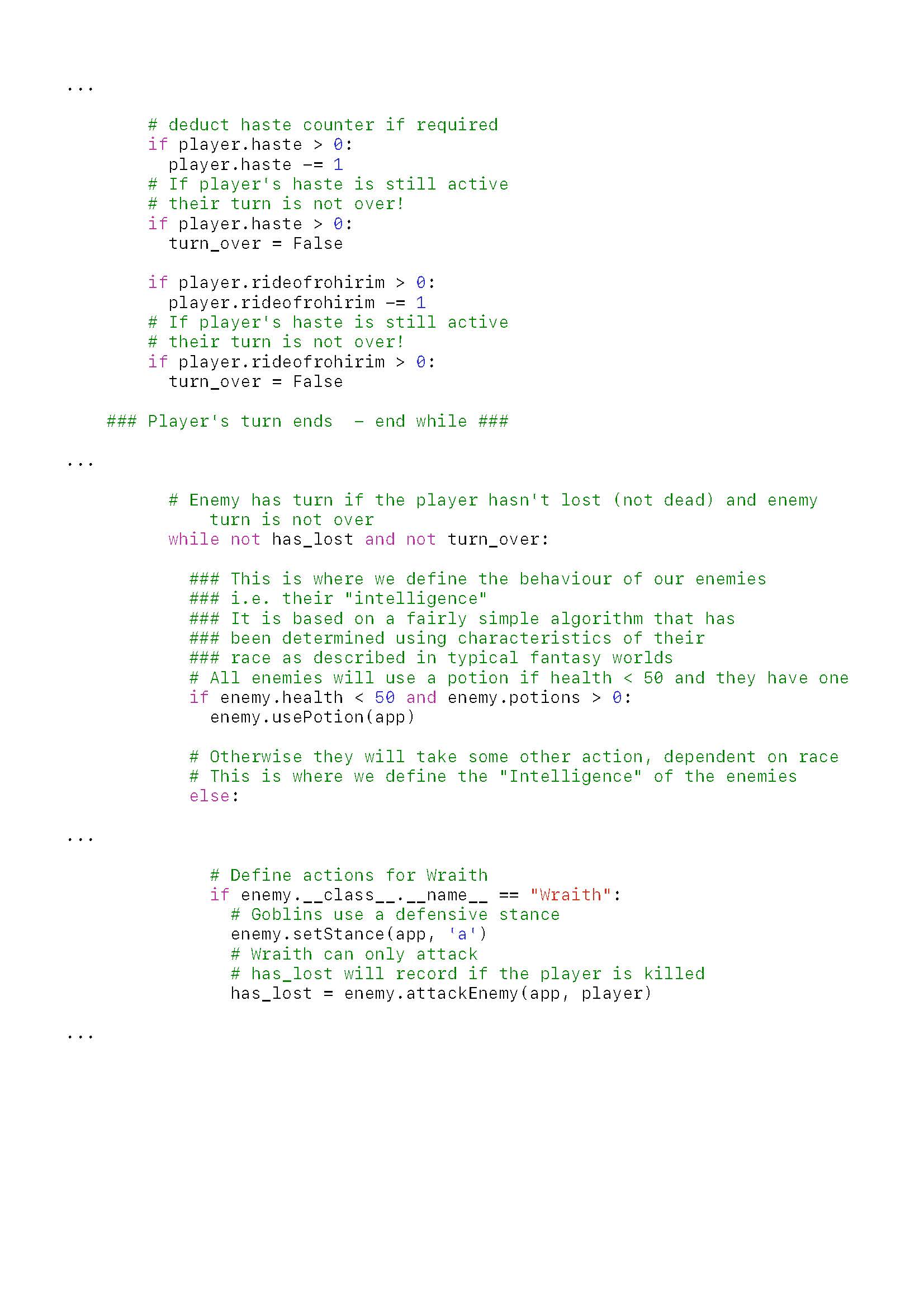 1
Annotation 1
1
Annotation 1
Replicates ride of Haste to implement ride of Rohirrim without adding new mechanic 2 Annotation 2
Adds simple artificial intelligence (AI) for Wraith character
-
Annotations
-
1
Annotation 1
Replicates ride of Haste to implement ride of Rohirrim without adding new mechanic -
2
Annotation 2
Adds simple artificial intelligence (AI) for Wraith character
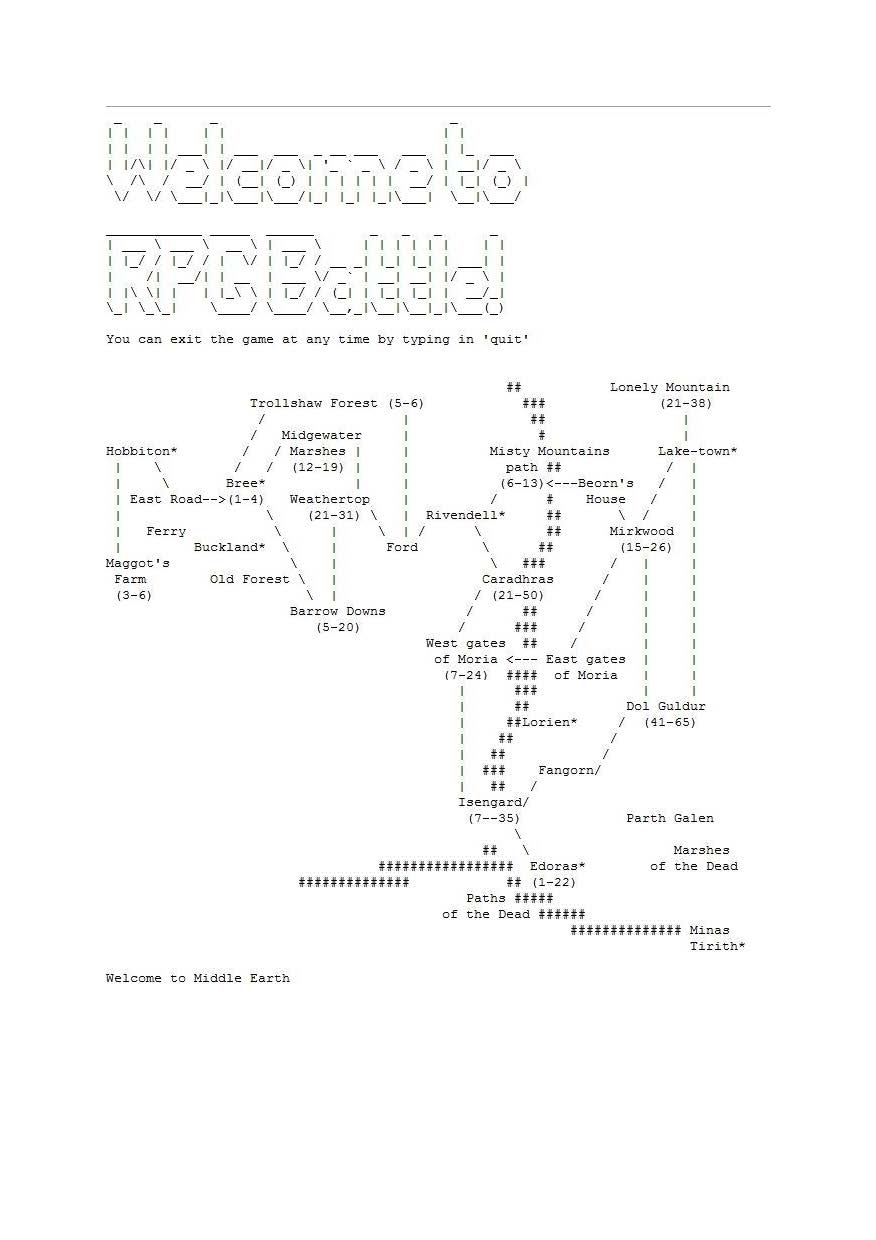
 1
Annotation 1
1
Annotation 1
Designs aspects of the user experience (player options correctly presented based on the code written and responses to input match expectations) 2 Annotation 2
Provides a visual representation of player status; however, shows some attributes that the player does not possess
-
Annotations
-
1
Annotation 1
Designs aspects of the user experience (player options correctly presented based on the code written and responses to input match expectations) -
2
Annotation 2
Provides a visual representation of player status; however, shows some attributes that the player does not possess
 1
Annotation 1
1
Annotation 1
Designs a basic conclusion to the game (game ends when all enemies are killed)
-
Annotations
-
1
Annotation 1
Designs a basic conclusion to the game (game ends when all enemies are killed)

